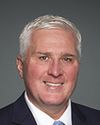Good morning, everyone. I call this meeting to order.
Welcome to meeting number 11 of the House of Commons Standing Committee on Procedure and House Affairs. Pursuant to the order of reference of Tuesday, April 11, the committee is meeting to discuss parliamentary duties in the context of the COVID-19 pandemic.
Before we start, I want to inform the members that pursuant to this order of reference, the committee is meeting for two reasons. It is beneficial to keep this in mind. I know we have new witnesses from time to time and different people who may be viewing this video footage, so I want to remind everyone of the two reasons we are meeting: one, for the purpose of undertaking a study and receiving evidence concerning matters related to the conduct of parliamentary duties in the context of the COVID-19 pandemic; and two, to prepare and present a report to the House of Commons by May 15 on the said study.
The order of reference also stipulates that only motions to determine witnesses and motions related to the adoption of the report are in order.
Today's meeting is taking place via video conference, and the proceedings will be made available via the House of Commons website. So that you are aware, the webcast will always show the person speaking rather than the entirety of the committee.
In order to facilitate the work of our interpreters and to ensure an orderly meeting, I would like to outline a few rules to follow.
Interpretation in this video conference will work very much like in a regular committee meeting. You have the choice at the bottom of your screen of floor, English or French. If you haven't selected a language, I recommend you do so right now.
Before speaking, please wait until I recognize you by name. When you are ready to speak, you can either click on the microphone icon to activate your mike or you can hold down the space bar while you are speaking. When you are done speaking, you can release the space bar, similar to a walkie-talkie. This is very beneficial for quick back-and-forth responses.
As a reminder, all comments by members and witnesses should be addressed through the chair. Should members need to request the floor outside of their designated time for questions, they should activate their mike and state that they have a point of order.
If members wish to intervene on a point of order that has been raised by another member, they should use the “raise hand” function. This will signal to the chair your interest to speak. In order to do so, you should click on “participants” at the bottom of your screen. A list will pop up on the side of your screen with your name, and the “raise hand” function should either be at the bottom of that list or at the side. You should be able to see if you've been able to click successfully.
When speaking, please speak slowly and clearly. When you are not speaking, your mike should always be on mute. This is vitally important for these meetings, because any background sound can be very disruptive.
The use of headsets is also strongly encouraged. Of course, Mr. Brassard, it's okay; we can still hear you even if you don't have your headset here today. The sound is just a bit clearer and sharper if you do have one.
Should any technical challenges arise in relation to interpretation, for example, or if you are accidentally disconnected, please advise the chair immediately and the technical team will work to resolve them. Please note that we may need to suspend during these times, as we need to ensure that all members are able to participate fully.
Before we get started, could everyone click on their screen in the top right-hand corner and ensure they are on gallery view? This view should enable you to see all the participants in a grid view. It will ensure that all video participants can see one another. This is also the most realistic, or it mimics what we usually see in a committee meeting. It is the best we can do virtually.
Also, when you are stepping away or looking away for a moment, I do advise that you leave your screen on rather than shutting your video off so that we know you didn't have some kind of a technical problem and that you're still there, just as you would be in a committee room.
During this meeting we will follow the same rules that usually apply to opening statements and the questioning of witnesses during our regular meetings. Each witness will have 10 minutes for an opening statement, followed by the usual rounds of questions from members.
I'd just like to urge the witnesses that if they do have remarks of less than 10 minutes, that would be ideal. If you can shave off a minute or two that will be very helpful, and I'll definitely remind witnesses in the second round of this because there are many questions we want to get to.
Just as we usually would in a regular committee meeting, we'll suspend in between panels in order to allow for the first group of witnesses to depart and for the next panel to join. In today's meeting we may have about a five- to ten-minute suspension at that time so the technical team can get set up.
I'd like to welcome our witnesses today.
We have Michel Patrice, deputy clerk, administration; Pierre Parent, chief human resources officer; and Mélanie Leclair, director of employee relations. We also have, from the Public Health Agency of Canada, Dr. Barbara Raymond, executive medical adviser, vice-president's office, infectious disease prevention and control branch.
I'd like to start with Michel Patrice.
Go ahead, please.



